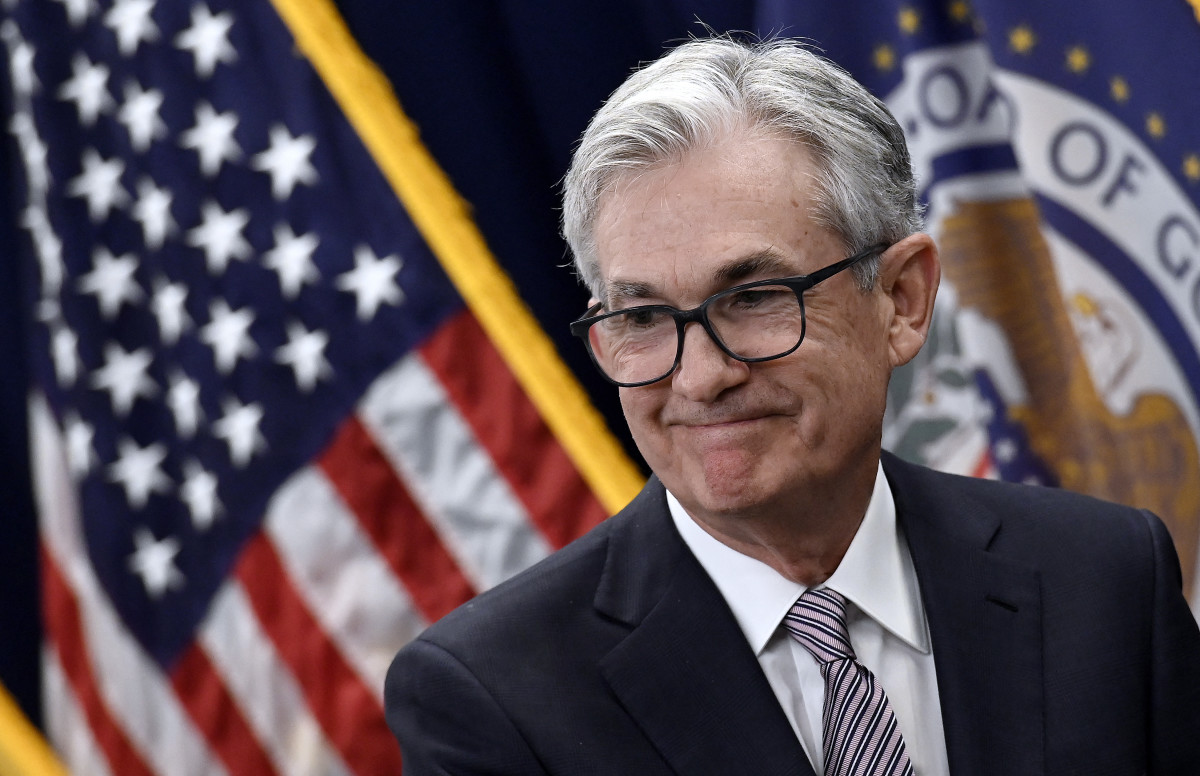Jobs report preview: Fed rate cuts could rely on 'game changing' trend
The Fed may need to see this surprising job-market trend continue into the coming year before committing to cutting interest rates.

Federal Reserve Chairman Jerome Powell stunned markets this week by effectively ruling out the chances of a March rate cut, citing stubbornly high inflation and a resilient job market.
Powell and his rate-setting colleagues on the Federal Open Market Committee, still stinging from criticism linked to their early call about "transitory" postcovid inflation, have committed to lowering borrowing costs but aren't in a rush to kick things off in the spring.
The economy continues to expand at a head-scratching pace, last pegged at around 4.2% by the Atlanta Fed's GDPNow forecasting tool. Activity surveys suggest companies are seeing solid consumer demand and falling input prices heading into the start of the year.
Powell also pointed to the end-of-year strength in the job market when he spoke to the media following the Fed's first rate decision of 2024 on Wednesday. He noted the solid pace of hiring and the best two-year run for headline unemployment in half a century.
Fed chief Powell's dual mandate
"It’s still a good labor market for wages and for finding a job. But it’s getting back into balance. And that’s what we want to see," Powell said, who is tasked with a dual mandate of delivering price stability alongside full employment. "We want to see a strong labor market. We’re not looking for a weaker labor market."
He might be seeing it now.
Challenger Gray, which details corporate layoffs in its benchmark monthly report, said companies let go of around 82,300 people in January, paced by the financial and technology sectors.
Excluding last January's total, the report said, the tally was the worst start to the year since 2009.
“Waves of layoff announcements hit US-based companies in January after a quiet fourth quarter," said Challenger Gray's senior vice president, Andrew Challenger. He noted a big focus on cost cutting as well as "broader economic trends and a strategic shift towards increased automation and AI adoption in various sectors."
Related: Fed inflation gauge dips below 3%, but spending jump eases bets on interest-rate cuts
Payroll-processing group ADP, meanwhile, said private-sector hiring slowed to 107,000 last month, well shy of Wall Street's 145,000 forecast, with the wage gains for job switchers falling to the lowest levels in more than two years.
"The labor market is normalizing after running extremely hot in the last few years," said Bill Adams, chief economist for Comerica Bank in Dallas. "For the Fed, the downshift of private hiring should allay concerns that strong GDP growth in the second half of 2023 might revive inflationary pressures."
More economy:
- Retail sales leap, testing Fed rate-cut bets
- Bond markets’ reaction to key data could be great for stocks
- Wall Street banks’ 2024 profit predictions rely heavily on one key outcome
That certainly seems to be the case, even with the weakening trends we're seeing in hiring, layoffs and pay gains, largely because productivity is improving.
Labor Department data published Thursday showed fourth-quarter labor-market productivity rising 3.2% from a year ago, with unit labor costs rising just 0.5%.
Paired with data showing the closely tracked employment-cost index rose just 0.9% last quarter, and its clear that whether it's a result of work-from-home dynamics, or the infusion of AI and related technologies across a host of business sectors, employers are getting more out of their workers - for less money.
And that might be exactly what the Fed is looking for.
Working smarter as well as harder
"I think we’re basically in the throes of getting through the pandemic economy. And the question will be, 'what is it that has changed?'" in terms of the recent productivity boost, Powell said.
"Is there a case [to be made] that we come out of this more productive on a sustained basis?" he asked. "I don’t know."
The answer may prove key to the Fed's inflation and rate-cutting forecasts, however, as the labor market normalizes. If companies are getting more output with less cost, they'll be less likely to lay off workers.
That, in turn, will keep job gains steady, and the economy from tipping into recession, while at the same time allowing inflation pressures to ease closer to the Fed's 2% target.
“Productivity growth is a potential game-changer for the economy," said Sonu Varghese, global macro strategist at Carson Group, who notes the recent advances are the best nonrecession gains seen in three decades
"Lower rates can spur more business investment and keep the labor market tight, which can further boost productivity," he added.
Related: Analysis: Economic soft landing? How about no landing at all
Economists see the Labor Department's January jobs report showing a modest slowdown in overall hiring, with a headline tally of 185,000 new jobs, and average hourly wage gains holding at around 4.1%. The data are set to be published Friday at 8:30 a.m. U.S. Eastern Time.
"The continued strength in nonfarm-payrolls growth, Jolts job-openings data and solid wage gain figures all suggest that labor markets (while slowing modestly) are not currently poised for trouble," said Rick Rieder, BlackRock’s chief investment officer of global fixed income.
Rieder argues that rate cuts are likely to start in May, with the Fed then looking for further reductions on an every-other-meeting basis.
"This would ease some of the pressures being felt by the more interest-sensitive segments of the economy, while still allowing for plenty of time to make sure inflation is not likely to reaccelerate and that the economy remains in sound shape," Rieder said.
Related: Veteran fund manager picks favorite stocks for 2024
What's Your Reaction?



























































